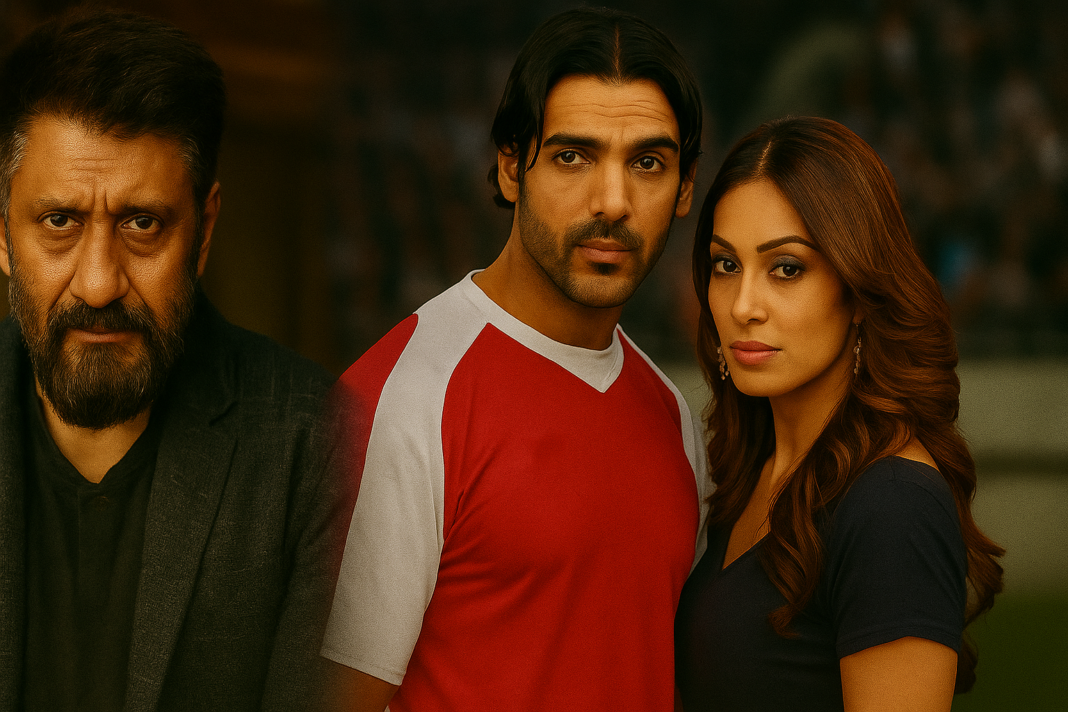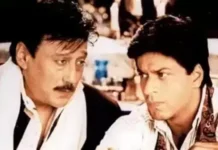In a candid revelation that’s grabbing headlines, filmmaker Vivek Agnihotri has shared the behind-the-scenes emotional challenges he faced while directing the 2007 film Dhan Dhana Dhan Goal. In a recent interview, Agnihotri revealed that the breakup of lead actors John Abraham and Bipasha Basu deeply impacted the film’s shooting schedule and the overall energy on set. He confessed that managing the tension between the two actors became one of the biggest hurdles he faced as a director during that project.
A Relationship Ends, and So Does the On-Set Harmony
John Abraham and Bipasha Basu, once one of Bollywood’s most popular real-life couples, reportedly ended their relationship around the time filming for Dhan Dhana Dhan Goal was in full swing. According to Agnihotri, the sudden breakup created a highly stressful environment, which had a direct impact on the actors’ on-screen chemistry and collaborative spirit. The director admitted that shooting romantic or emotionally charged scenes became extremely difficult because the two stars were no longer on speaking terms during many parts of the production.
Vivek recalled that scenes involving both actors had to be carefully choreographed, not just for performance but to ensure they could be shot without emotional discomfort. In some moments, he had to film them separately and stitch scenes together in post-production. He shared that the split resulted in multiple re-takes, added tension for the crew, and ultimately slowed down the production.
John Abraham’s Performance Affected by Emotional Disruption
Agnihotri specifically mentioned that John Abraham’s performance was visibly affected by the breakup. He described how John would struggle to deliver his lines with full emotional engagement, forcing the crew to shoot multiple takes and make creative adjustments in editing. In some football sequences, John had to be filmed performing only the physical movement, while his expressions were captured in separate close-ups. This breakdown in natural flow and spontaneity made the direction and editing process more technical and less artistic, according to Agnihotri.
The director said that for any actor, especially one going through a personal crisis, it becomes difficult to switch into character with conviction. And in this case, where the co-star was also part of that emotional equation, the challenge doubled. These behind-the-scenes battles made Agnihotri realize the emotional vulnerability actors face and how personal matters can seep into professional commitments—especially when real and reel life collide.
The Bollywood Star System Comes Under Fire
While reflecting on the situation, Vivek Agnihotri didn’t just stop at narrating the breakup’s impact—he also criticized the larger problem in the Indian film industry: the over-dependence on star power. He strongly expressed that Bollywood often prioritizes big names over acting talent, which leads to films being controlled not by the director’s vision but by the actors’ mood, egos, and limitations.
He said that films are frequently made not because of a good story or script, but because a “bankable face” is attached to the project. In his words, the entire creative process ends up “dependent on an incompetent, mediocre actor’s intelligence”, which he believes hinders growth and innovation in cinema. He noted that while John and Bipasha were committed professionals, their personal issues highlighted just how risky it is to place entire productions in the hands of emotionally volatile actors without a backup plan or flexibility in direction.
Creative Conflicts with Anurag Kashyap Add to the Pressure
As if the romantic fallout wasn’t enough to handle, Agnihotri also revealed that the film’s production was further complicated by creative disagreements with writer Anurag Kashyap. According to the director, Anurag had written some of the dialogues for the movie but later became dissatisfied with the way his contributions were credited and implemented.
Agnihotri clarified that although the conflict was never personal, it did add an extra layer of complexity to the filmmaking process. He maintained that he respects Kashyap’s creativity but felt that the team dynamics became too strained for comfort. He emphasized that when you bring together multiple strong artistic personalities, it’s essential to maintain a sense of collaboration over ego, something that became difficult amid all the emotional and creative friction.
Saroj Khan’s “Billo Rani” Was a Ray of Light
Despite all the emotional turmoil, one standout moment from the film that brought smiles to the crew was the iconic song “Billo Rani”. Choreographed by the legendary Saroj Khan, the song almost didn’t make it into the final cut due to producers’ doubts about its traditional Qawwali style. But Saroj Khan, confident in her vision, convinced the team to go ahead. The result was a song that not only became a chartbuster but also gave Bipasha Basu one of the most memorable dance sequences of her career.
Ironically, the shoot for “Billo Rani” happened just after the couple’s breakup. Yet, according to Agnihotri, both John and Bipasha acted with full professionalism and didn’t let their personal equation interfere with the dance shoot. This instance proved that despite personal setbacks, artists can still rise to deliver performances that resonate with audiences. The song, now considered a classic, is perhaps one of the only times during the production where the entire team felt united in creativity and purpose.
Audience Reception and Legacy
Released in 2007, Dhan Dhana Dhan Goal received mixed reviews from critics. However, audiences appreciated the film’s sports theme, especially its attempt to highlight racism and community pride among Indian-origin footballers in the UK. Though not a massive box office success, the film carved a small niche for itself and continues to enjoy TV replays and music streams today.
Now, with Agnihotri’s recent revelations, many viewers are rewatching the movie through a new lens. What once appeared as lackluster chemistry between the leads or slightly inconsistent performances can now be understood in the context of real emotional challenges the actors were facing at the time.
A Lesson for Filmmakers and the Industry
Through his honest reflections, Vivek Agnihotri has offered a valuable insight for the Indian film industry. The takeaway is not just about one film’s troubled journey, but about the need to build emotionally stable and artistically driven ecosystems in filmmaking. He emphasized that filmmakers need to think beyond just the glamour of casting and focus more on actors’ ability to adapt, emote, and maintain professionalism despite personal hurdles.
Agnihotri believes that the glamour-focused casting model is outdated, especially in an era where audiences care more about storytelling and authenticity than just star power. He urged producers and directors to cultivate teams that bring emotional maturity, creative respect, and shared vision to the set, especially when the story requires nuanced, human storytelling.
The story of Dhan Dhana Dhan Goal is no longer just a sports drama about a minority football team—it is now also a reflection of how human relationships, star culture, and creative choices intertwine behind the camera. The breakup of John Abraham and Bipasha Basu didn’t just affect their personal lives, it became a disruptive element in a professional space where countless others were also invested.
Yet, through all the challenges, the team managed to deliver a complete film, leaving behind valuable lessons for others. For viewers, this story serves as a reminder that even the most glamorous industry has its share of heartbreak, compromise, and struggle. And for young filmmakers, it’s a lesson in resilience: that the journey to creating art will always be messy—but worth it, if handled with honesty and courage.


































